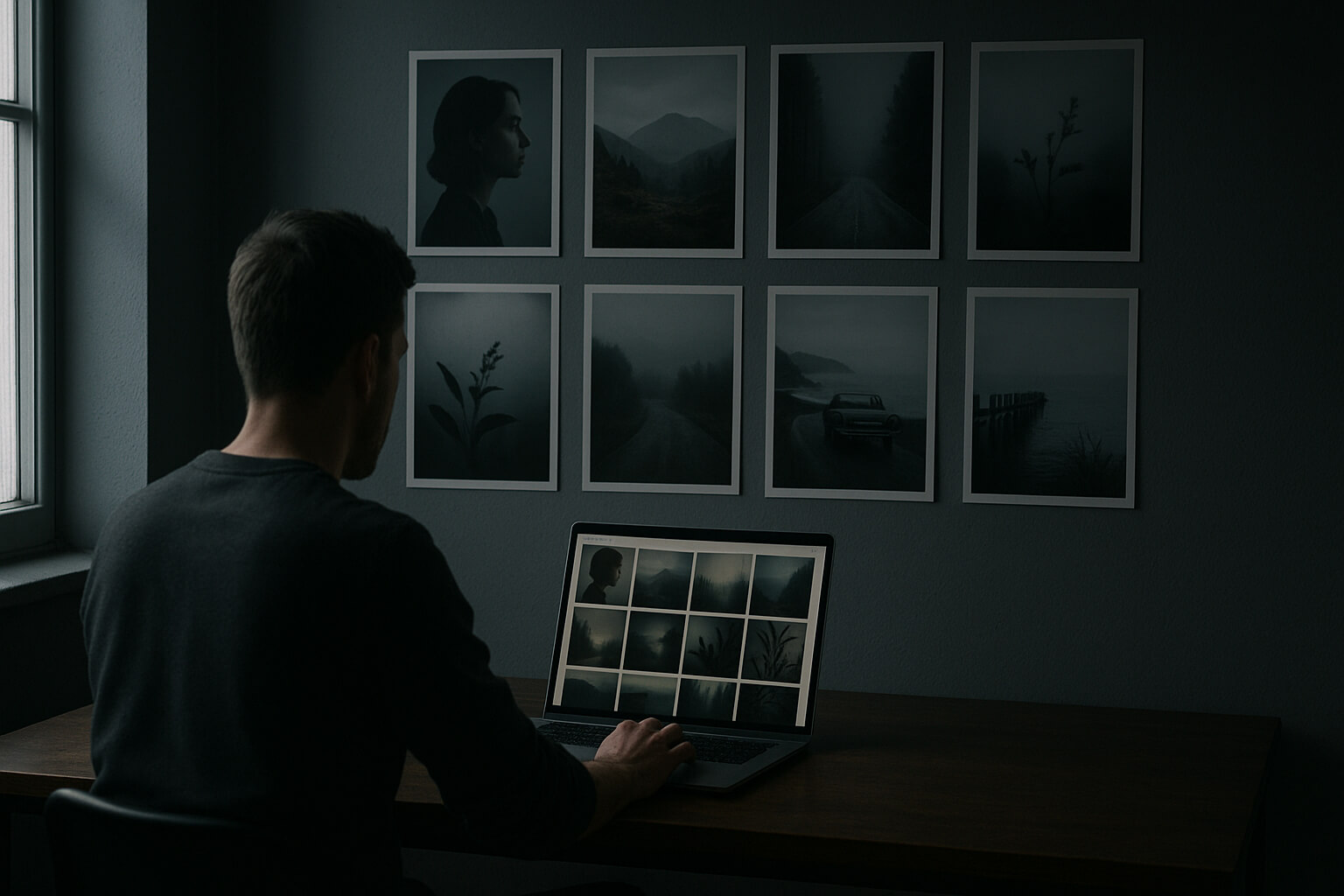June 06, 2025

"Stand out, get recognized, and build your brand through visual identity."
In a world overflowing with images, creating a signature photography style is one of the most powerful ways to set yourself apart. A distinct visual voice not only makes your work instantly recognizable—it also builds brand authority, attracts high-quality clients, and allows you to charge more for your services.
But how do you craft a look and feel that’s unmistakably yours? In this guide, we’ll walk you through the actionable steps used by successful photographers to develop, refine, and promote their unique style.
Think of your signature style as your visual fingerprint—the creative DNA that runs through every photo you publish.
Here’s why it’s so important:
Want to start earning from your work? Your style is what helps you stand out. Learn how to sell your photos for passive income across top platforms.
Start by identifying what you're naturally drawn to. This self-reflection helps uncover the foundations of your creative identity.
Ask yourself:
Creating a digital mood board—using tools like Pinterest or Milanote—can help you visualize recurring themes and aesthetics you admire. The more specific and personal your inspirations, the more original your style will be.
Want to turn this passion into a career? Here’s how to start your photography business from scratch.
You don’t have to start from zero. Often, your current work already contains clues about your emerging style. Take time to go through your past shoots and look for recurring traits.
Consider:
This review will help you identify patterns you may not have consciously intended—but that you can now develop with more intention and consistency.
A strong photography style often comes down to a few key elements working together harmoniously.
Focus on:
Need help dialing in your lighting? Check out this full guide on the best lighting setups for product photography—many of the principles apply to portrait and lifestyle work too.
Once you’ve locked in your favorite color grading, contrast levels, and tonal balance, the next step is to create custom presets. Whether you use Lightroom, Capture One, or Photoshop, presets allow you to:
Use your presets as a foundation—not a limitation. They should support your style, not replace your creative judgment.
Want to make sure your images are protected? Here’s how to edit and copyright your work so your signature style stays yours.
Your photography style isn’t just for your camera roll—it should be the backbone of your entire brand presence.
Here’s where to apply your style:
Everything should feel like it came from the same creative mind.
A signature style isn’t something you declare overnight—it’s something that evolves through practice, review, and feedback.
Here’s how to keep it growing:
But stay true to your voice. Refinement doesn’t mean watering down your vision—it means polishing it.
Pro tip: Want to work with premium clients? Consistency and clarity in your style are key. Here’s how to attract high-paying photography clients.
Once you’ve honed your signature style, make it the centerpiece of your marketing strategy.
Here’s how:
Already shooting with consistency? Take the next step—here’s how to scale your business full-time using your personal brand as your foundation.
Many professional photographers didn’t start with a style—they discovered it through repetition and curiosity. By paying attention to what felt “right” and refining it over time, they eventually developed a look that became instantly identifiable. Whether it’s bright lifestyle shots or moody editorial portraits, their work is known by feel—even before the signature.
Remember: You don’t need expensive gear or studio access to build your style. What matters most is consistency, clarity, and creative intent.
A signature style isn’t just about aesthetics—it’s a business asset. It communicates your values, attracts your ideal clients, and sets the tone for everything you create.
It will take time to develop. It may evolve. But once you find it, everything else becomes easier—from branding and marketing to bookings and recognition.
Stay up to date with the newest tips, gear reviews, and step-by-step guides to elevate your photography journey from home and beyond.